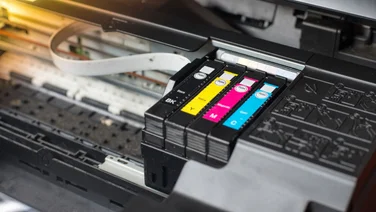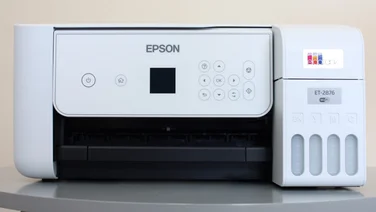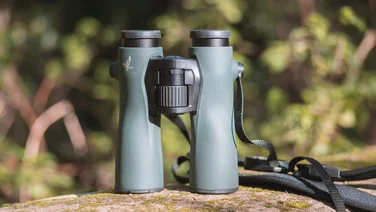To help us provide you with free impartial advice, we may earn a commission if you buy through links on our site. Learn more

















The Panasonic GM5 is one of very few cameras with interchangeable lenses that will fit into a trouser pocket or small handbag. It’s a crucial factor for anyone who finds other CSCs appealing but still a bit too big to carry around all day. It’s an update to the Panasonic GM1 and gains various new features, but its weight has only increased by 5g.
The most significant change is the introduction of an electronic viewfinder (EVF). It’s particularly useful when shooting in direct sunlight when the screen can be hard to see. Bracing the camera against your eye can also help to avoid camera shake. It’s not the best EVF we’ve seen at this price, though. The 0.46x (equivalent) magnification is on the small side and it doesn’t seem as bright as other EVFs. We’re happy to have it all the same, but given the choice, we’d have preferred a tilting LCD screen instead.

^ The new GM5 is noticeably taller than the older GM1 – its main competitor
Adding an EVF takes up space, Panasonic has made the camera 5mm taller and the screen has been changed to make more room. The display still measures 3in across but now has a widescreen aspect ratio. That means a bigger viewing size for videos, but a smaller one for photos at the standard 4:3 aspect ratio – although we know a number of (possibly crazy) people who prefer to shoot at 16:9 these days, as they prefer the shape and it fills their TV screen neatly. As before, the screen is touch sensitive, which makes it easy to adjust the autofocus point. It also adds various on-screen controls and provides an alternative way to navigate the menus.

^ The new design includes a switch to a more TV-friendly 16:9 display
The buttons and dials have been reorganised, with a new command dial that can be pushed inwards to toggle between various exposure-related duties, depending on the selected mode. It works well enough but the dial is a little too stiff for our liking. We found the GM1’s rear wheel easier to use.
There’s room for three new buttons between the command dial and EVF. One switches between the screen and EVF. There’s an eye sensor to switch it automatically, but the button overrides this. Another launches the Wi-Fi functions, with elegant image transfers, comprehensive remote control and GPS tagging facilities. Both of these buttons can be reassigned, with 46 functions to choose from. The repositioned playback button allows room for a proper thumb grip on the back of the camera without fear of accidentally pressing the record button.

As before, there’s a dedicated switch for single, continuous and manual focus. It’s a slightly strange choice – we’d have preferred an exposure compensation dial. Disappointingly, the Fn1 button on the GM1’s top plate has disappeared, so there’s no significant gain in the overall button count.
The other big change is the move from an internal pop-up flash to a detachable unit. This will probably be seen by most people as a retrograde step. It’s another thing to carry – or lose – when you’re out, and attaching it spoils the slinky design. It sits in a standard hotshoe, which means that larger flashguns can be used, although we doubt many people would bother on such a petite camera. The ability to attach wireless flash triggers could be more useful.

^ The pop-up flash is gone, replaced by a clip-on unit instead
Performance is up to scratch, taking just one second to power up and take a photo, and half a second between shots in normal use. Autofocus was reliably quick. Continuous mode ran at 5.6fps and lasted for 80 JPEGs or 6 RAW frames before slowing. It managed 4.4fps with continuous autofocus.
As with the GM1, it’s amazing how little Panasonic has compromised in its quest for miniaturisation. The lens collapses down when not in use, extending just 29mm from the camera body, and yet it still offers a respectable 2.7x (24-64mm) zoom. There’s no NFC for automatic configuration of Wi-Fi connections, but it isn’t much of a chore to do it manually or with the help of a QR code that appears on the camera’s screen. The 210 shot battery life is one casualty, though. It’s surprisingly comfortable to hold for such a slim camera, but we’d have preferred some kind of ridge on the front to serve as a grip. There’s an optional handgrip available (part code DMW-HGR1), but £90 is an awful lot to pay for what is essentially just a lump of metal.
There’s no compromise at all when it comes to video and photo quality, with the same high standards we’ve seen many times before from Panasonic Lumix G cameras. Video quality is particularly strong, with remarkably crisp, smooth details that make 1080p footage from other camera brands look a little coarse. Noise levels were modest at ISO 3200 – the top speed available for videos – and colour rendition was excellent.
IMAGE QUALITY
16-megapixel photos place greater demands on the lens, but it had no trouble resolving sharp details throughout its zoom range – a fine achievement considering its slim design. Dense, subtle textures were handled well by the JPEG engine, but there was a hint of chroma noise in these parts of images, even in brightly lit scenes. As usual, processing RAW files gave the best results. Skin tones were smooth and natural, and automatic settings handled tricky lighting conditions well. We particularly appreciate how the camera raised the shutter speed automatically when it sensed motion in a scene.
Noise levels matched other recent Lumix G cameras, including the GM1 launched a year earlier. That’s not a bad result by any means, but noise levels were a little higher than from recent CSCs from Sony, Samsung and Fujifilm, all of which use slightly larger sensors. None of these cameras can compete with the GM5 for compactness, though.

^ There’s about as much detail as we could hope to see in a 16-megapixel JPEG here, and no sign of clipping or blooming on the white highlights of the swan and geese. (1/400s, f/9, ISO 200, 64mm equivalent)

^ Pin-sharp focus from corner to corner in this wide-angle shot is a superb achievement for such a tiny lens. (1/125s, f/3.5, ISO 200, 24mm equivalent)

^ Skin textures in bright light look every bit as good as we’d expect from an SLR. (1/400s, f/8, ISO 200, 34mm equivalent)

^ The automatic exposure on this shot is nicely judged, and focus is pin sharp. (1/200s, f/6.3, ISO 200, 64mm equivalent)

^ There’s a hint of noise at ISO 500, but still plenty of detail. (1/60s, f/4.9, ISO 500, 46mm equivalent)

^ Delicate textures are getting lost at ISO 2500 and there’s some graininess in places, but this is an excellent result for such a small camera. (1/60s, f/4.2, ISO 2500, 36mm equivalent)

^ The camera has used a faster shutter this time to freeze motion, and image quality is holding out well at ISO 5000. (1/125s, f/4.2, ISO 5000, 36mm equivalent)

^ Swapping the kit lens for the Panasonic 20mm f/1.7 gives a significant boost to image quality in low light, capturing moving subjects in twilight with an acceptable amount of noise. (1/125s, f/1.7, ISO 2000, 40mm equivalent)
CONCLUSION AND COMPETITORS
The biggest competition for the GM5 comes not from other CSCs but from premium compacts with fixed lenses. For the same price as the GM5, you could pick up the Panasonic LX100, which uses a slightly smaller sensor (it’s actually a 12-megapixel cropped area on the same sensor) but pairs it with a much brighter lens to give a big boost to low light image quality. The GM5 with its kit lens has the equivalent of an f/7-11.2 aperture on a full frame camera, whereas the LX100 is equivalent to f/3.7-6.2 – that’s getting on for four times as much light being captured, with an equivalent boost to image quality. The LX100 also wins hands down for physical controls, EVF quality and 4K video capture. It’s a little bulkier and heavier though, and it lacks a touchscreen.
If a small size is paramount, it’s worth considering the Sony RX100 III. It weighs about the same but is significantly slimmer at 41mm, includes an excellent EVF and a tilting touchscreen. It captures twice as much light as the GM5 with its f/4.9-7.6 (35mm-equivalent) aperture.
The GM5’s trump card is its ability to switch lenses, transforming it from a slim general-purpose camera to a low-light camera for evenings or a macro or telephoto for special projects. However, the GM5 strikes us as a camera that will probably spend its life with a single lens attached. There are other CSCs that are better suited to photography enthusiasts who want to build up a collection of lenses. It’s also worth noting that the GM1 looks more attractive than ever at £439. The improvements to the GM5 are fairly modest, so we’d be tempted to stick with the previous model, and perhaps put the difference towards the 20mm f/1.7 lens.
Some strong competition doesn’t take away from the GM5’s charms, though. If a petite design, viewfinder and interchangeable lenses are on your shopping list, it’s an excellent choice.
And if none of these fit your needs then check out our regularly-updated Best Cameras list and buying guide.





